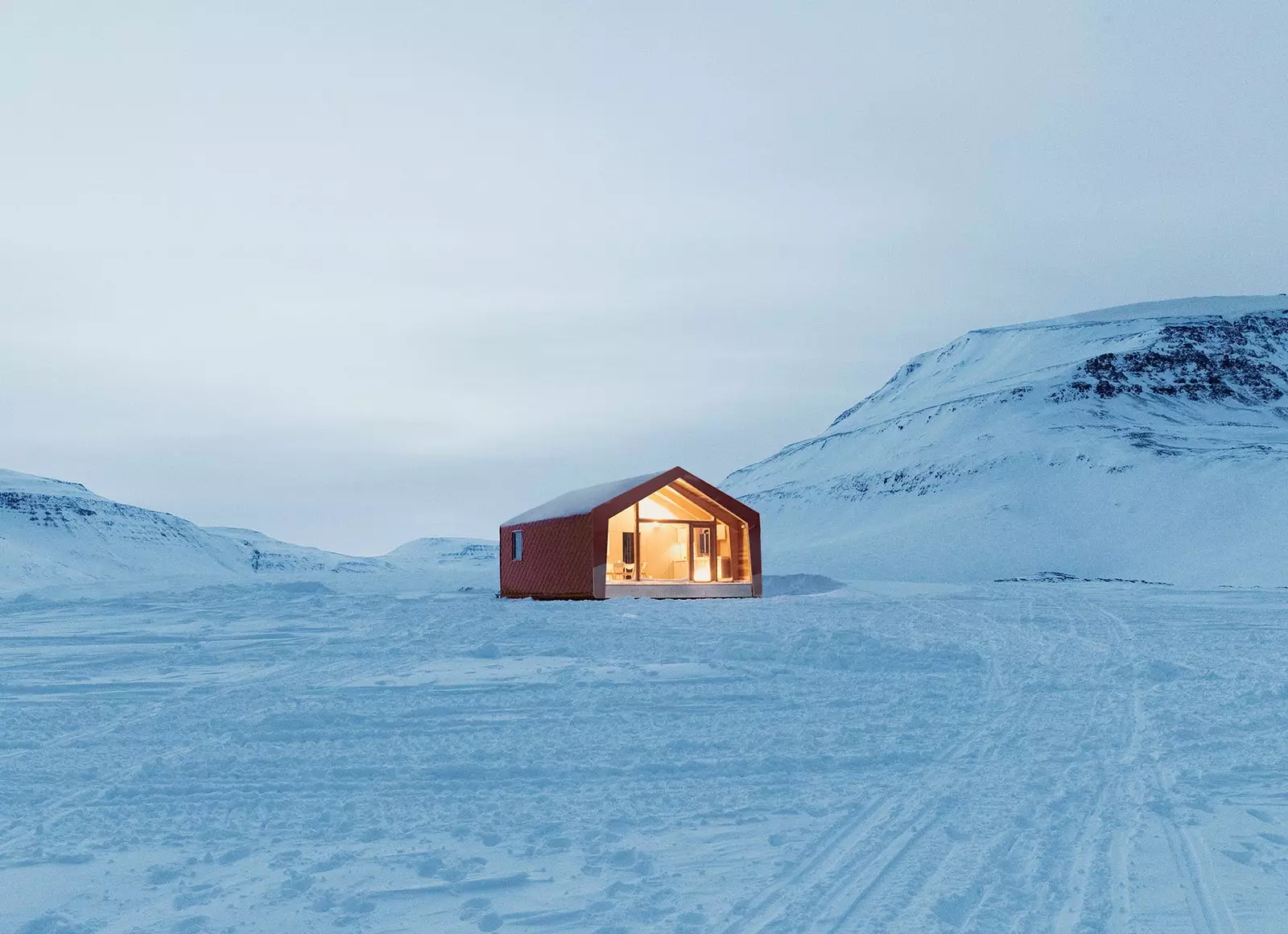
Scientists will live here during the winter on Disko Island
Can you imagine facing temperatures between minus nineteen and minus forty degrees centigrade ? For every winter, the thousand inhabitants of Disko Island, Greenland, withstand that frigid environment. Nothing more and nothing less than a frozen surface of 9,000 square kilometers , surrounded by impressive icebergs, gives life to this remote place.
A group of scientists from the University of Copenhagen who studies climate change travels during the winter season to this inhospitable island, where, due to the cold climate, on numerous occasions they have had to suspend the investigations as it was not possible withstand more than ten minutes outdoors.
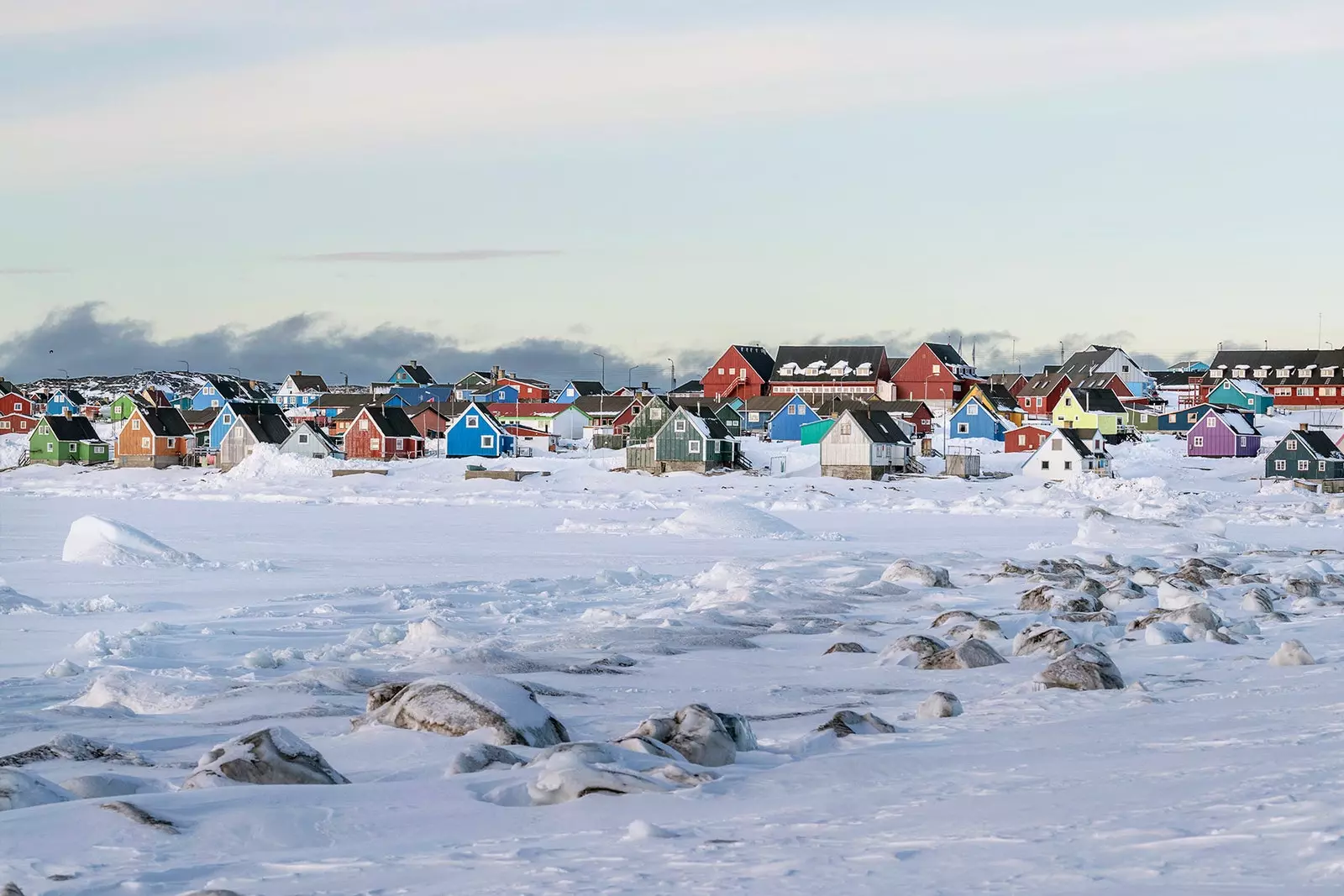
The icy Disko Island
For this reason, it has been designed an ecological and air-conditioned refuge where Danish researchers can stay during their stay on Disko Island. Ariston Comfort Challenge is the name of the solidarity challenge, led by the thermal comfort firm Ariston, whose mission was to build a comfortable home that adapt to weather conditions from that point on the island.
In this way, since this winter, scientists have been made easier to collect samples abroad, since before starting this project they had to shelter in the arctic station , located in a less extreme area but far from the area of interest. Now they will be able to work throughout the year without interruptions.
To meet his goal, Ariston carried out an arduous recruitment process to carry out the initiative, finally selecting **three installers from China, Russia and Italy**, who built the Disko Island refuge against the clock: in just 20 days.
Ariston Comfort Zone . This is how the long-awaited house has been baptized. Built in the remote and chromatic village of Qeqertarsuaq, it can boast of being the most ecological and sustainable house on the entire island of Disko. Ariston has had the collaboration of Leapfactory, a company specialized in construction in extreme natural environments, for the development of the work.
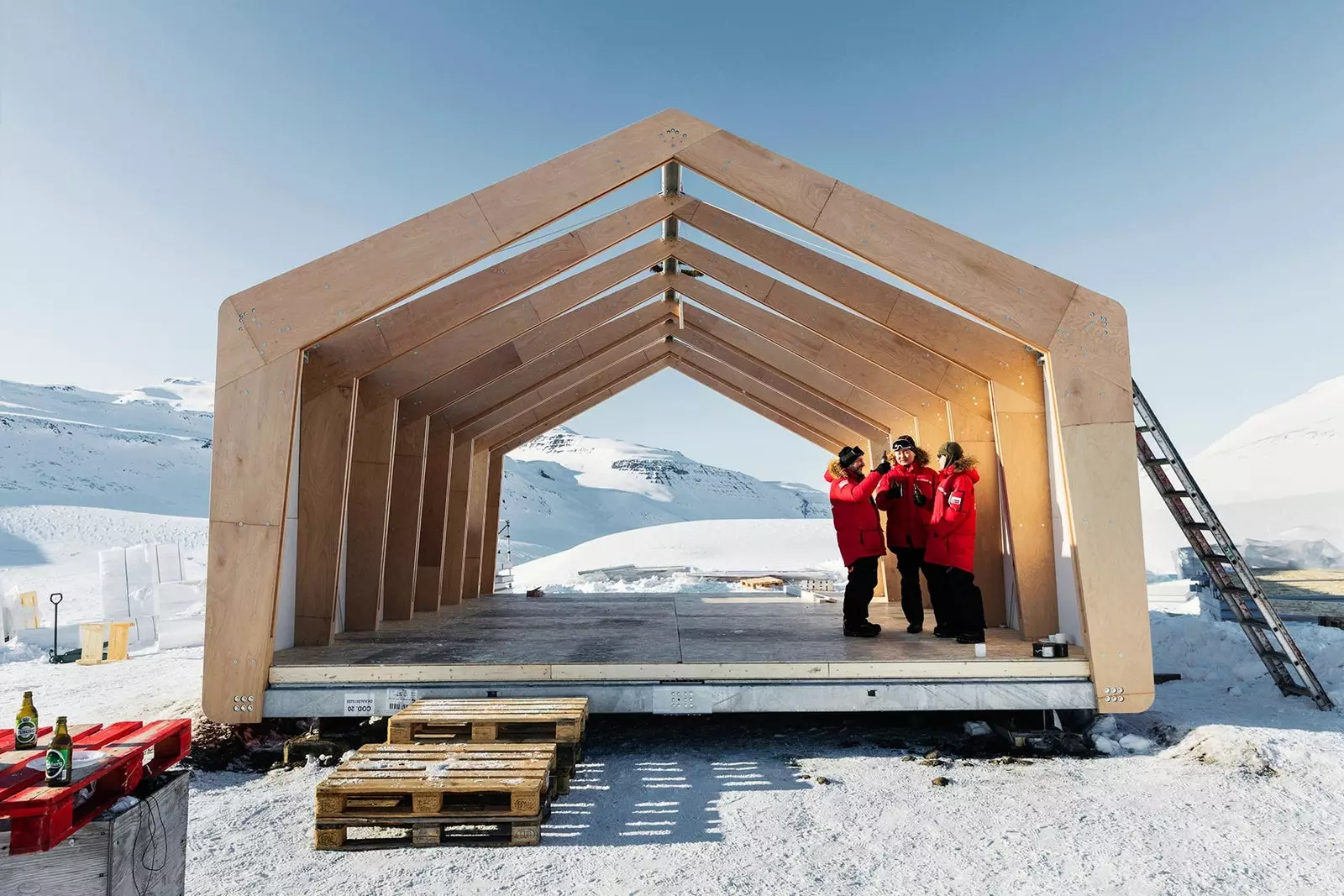
This is the structure of the house
In turn, the installers were also supported by the local population of Qeqertarsuaq always acting under the guidance of the Institute of Geosciences and Natural Resource Management of the University of Copenhagen , of which the scientists who stay in the house are part.
Quality engineering, to achieve the highest energy efficiency possible, and one total integration in the environment are the qualities that define this Arctic refuge. Its outer shell is not only designed to provide comfort and reduce energy consumption as much as possible, but it is also able to withstand temperatures down to -40°C.
As for the crossing, bad weather forced him to stop his route on several occasions due to snow storms. **The materials were imported from Copenhagen**, where this whole adventure began.
From there, the three in charge of building the house took a flight to Kangerlussuaq , an icy settlement in the Qeqqata municipality in western Greenland.
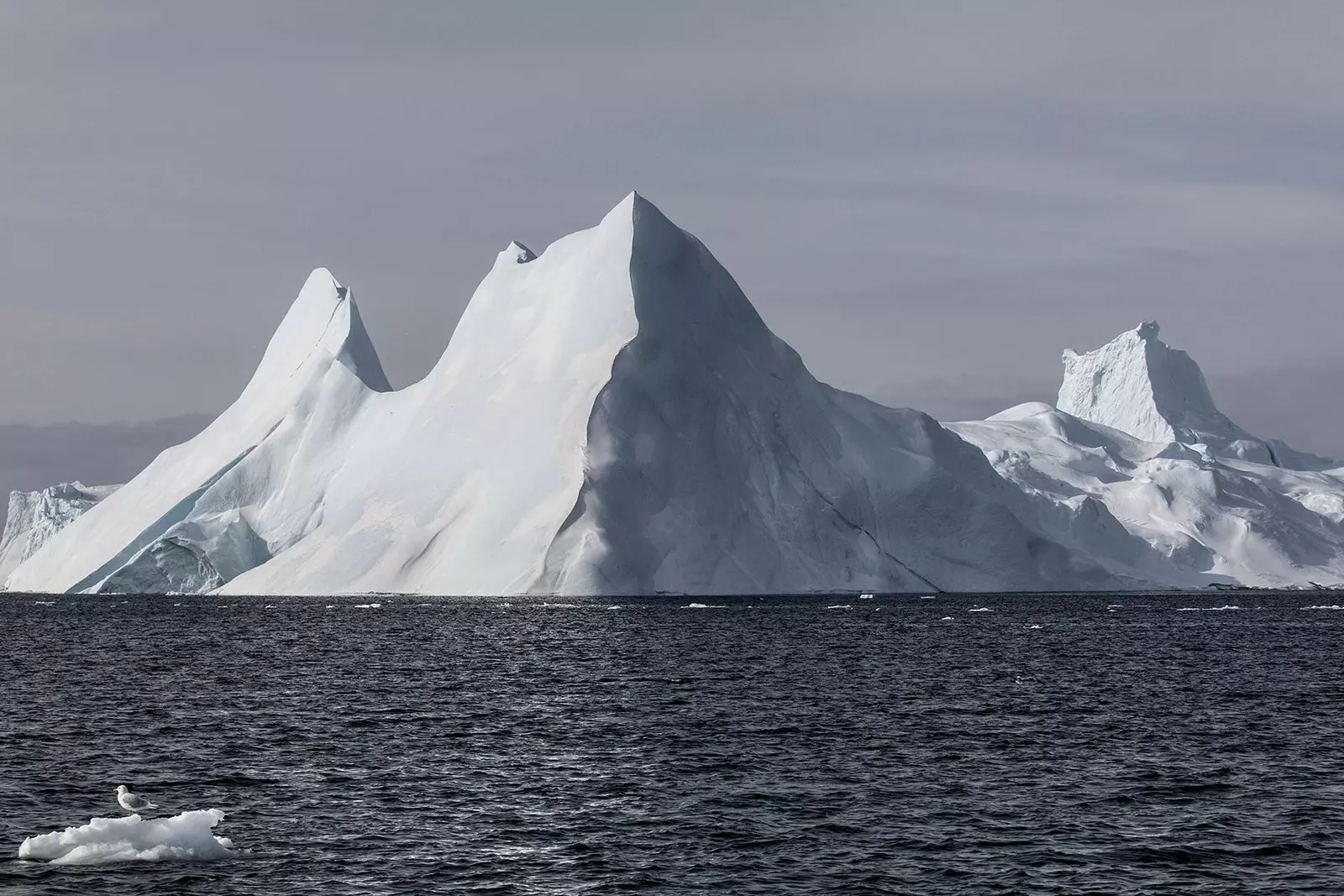
Greenland, a frozen landscape
Once in polar lands, the travelers went to Ilulissat (whose name means “iceberg” in Inuit), a village of colorful houses that is **one of the largest communities in western Greenland**, where they were able to see the beauty of its imposing fjord , declared a World Heritage Site by UNESCO in 2004.
Although all that glitters is not gold: it is also one of the great examples of global warming in the Arctic.
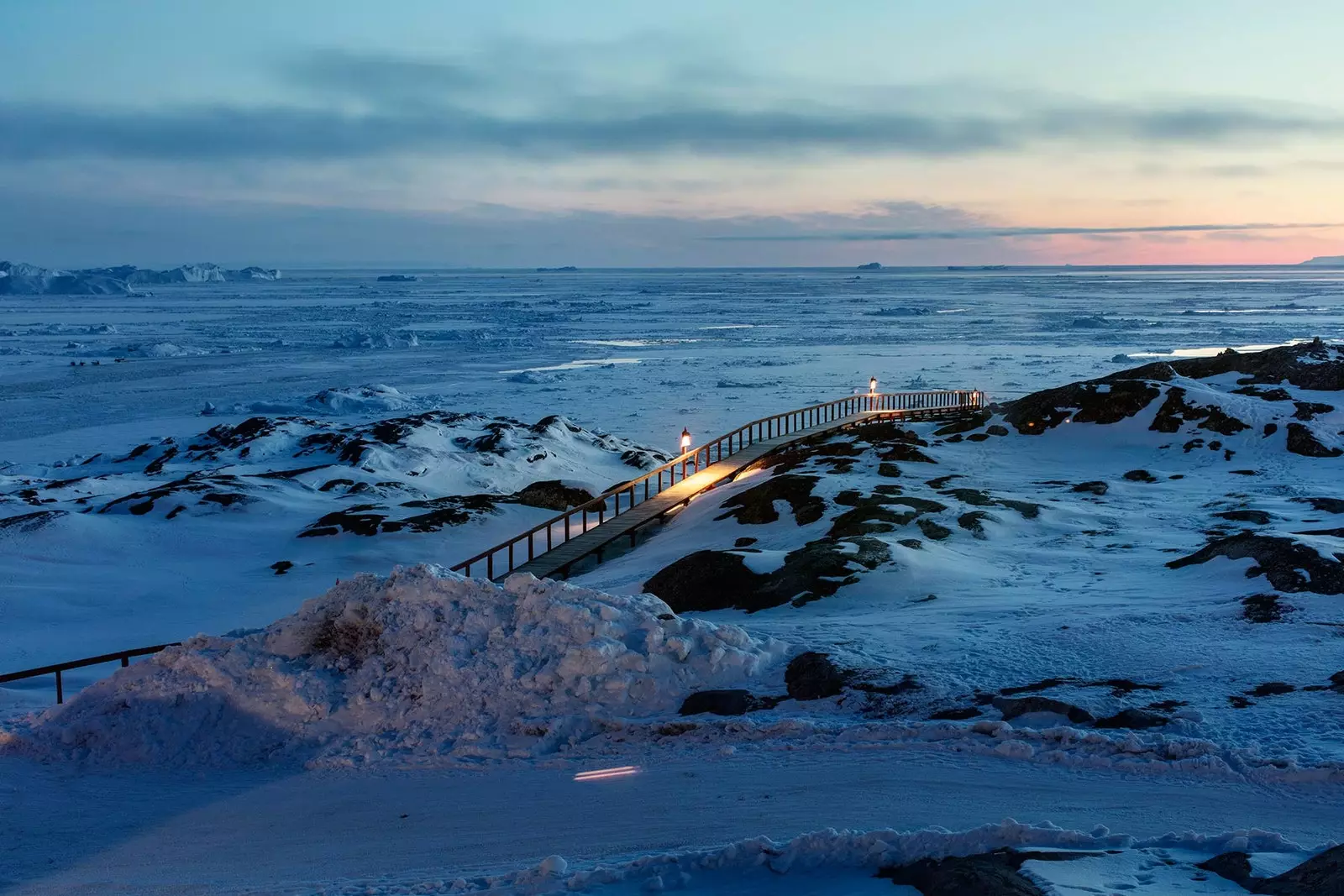
Sunset in Ilulissat
In addition, due to adverse weather conditions, transfers from the Qeqqata airport to Disko Island were carried out in helicopter and regular freight transport.
In turn, the final stretch of the journey had to be done with dog sledding , who transported the materials to the land where the scientific shelter stands.
If you're curious about how the entire mission went, from moving the materials to building the house in Greenland, was filmed as documentary film. You can see it on the channel DMAX in Spain or in Youtube , and, shortly, will also be available on the channel dplay.
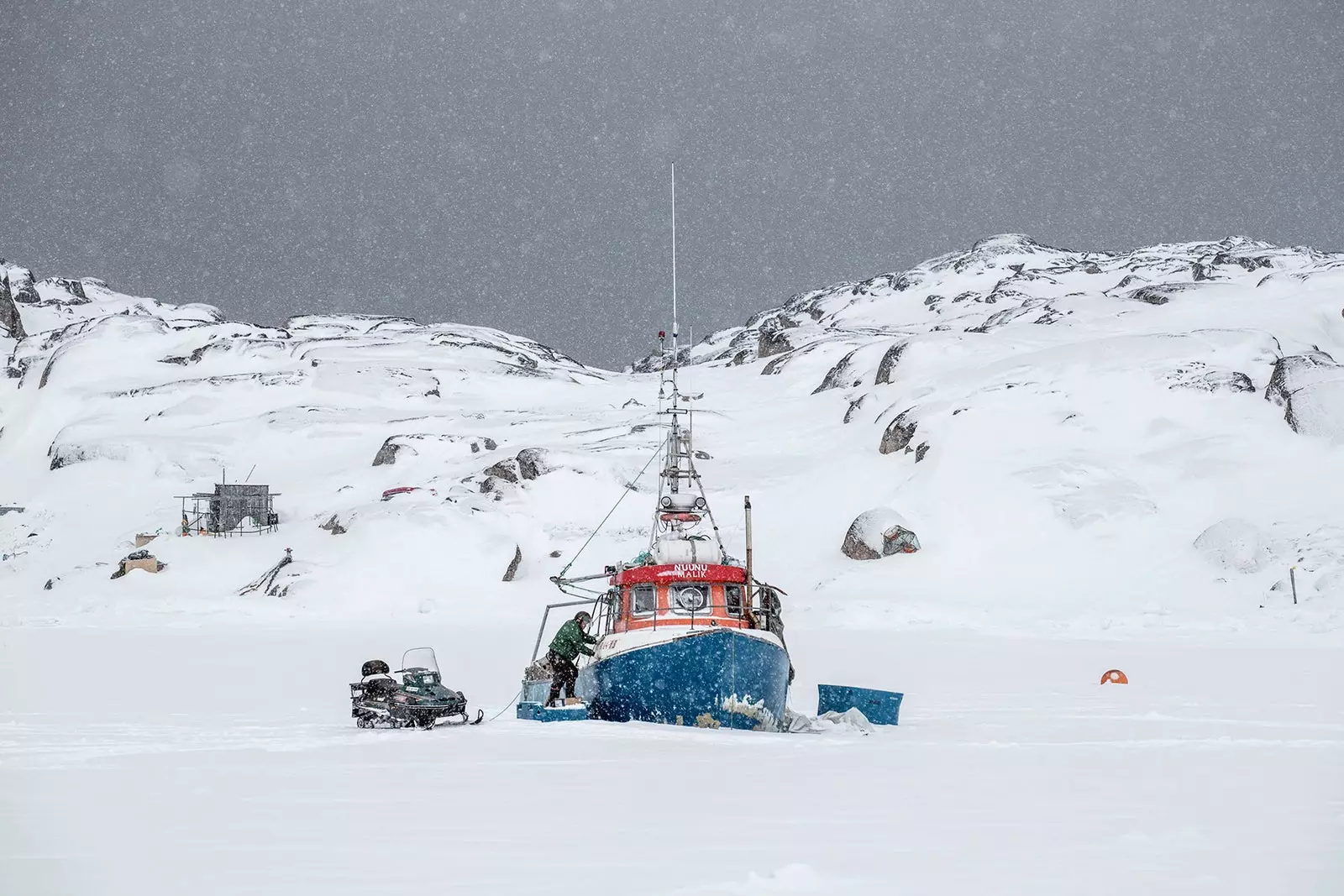
They needed an icebreaker ship to move the cargo
